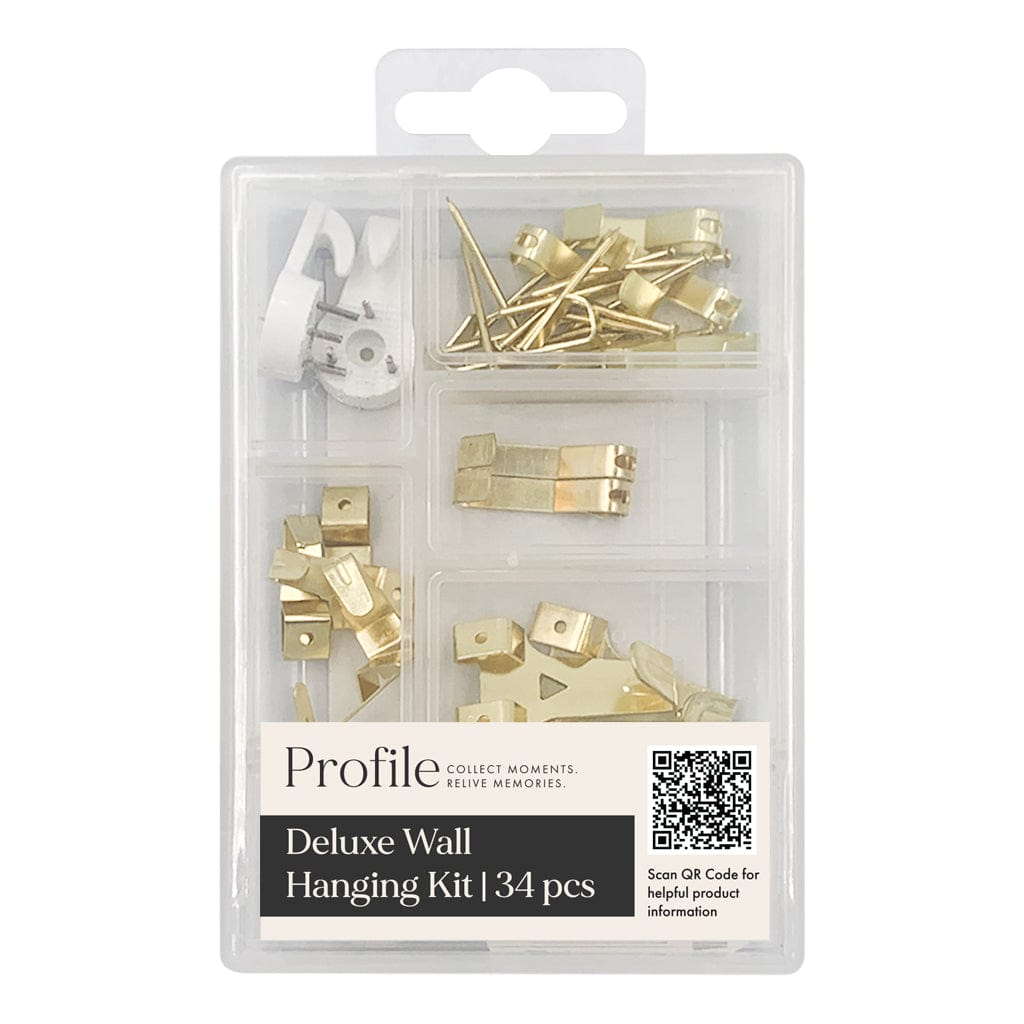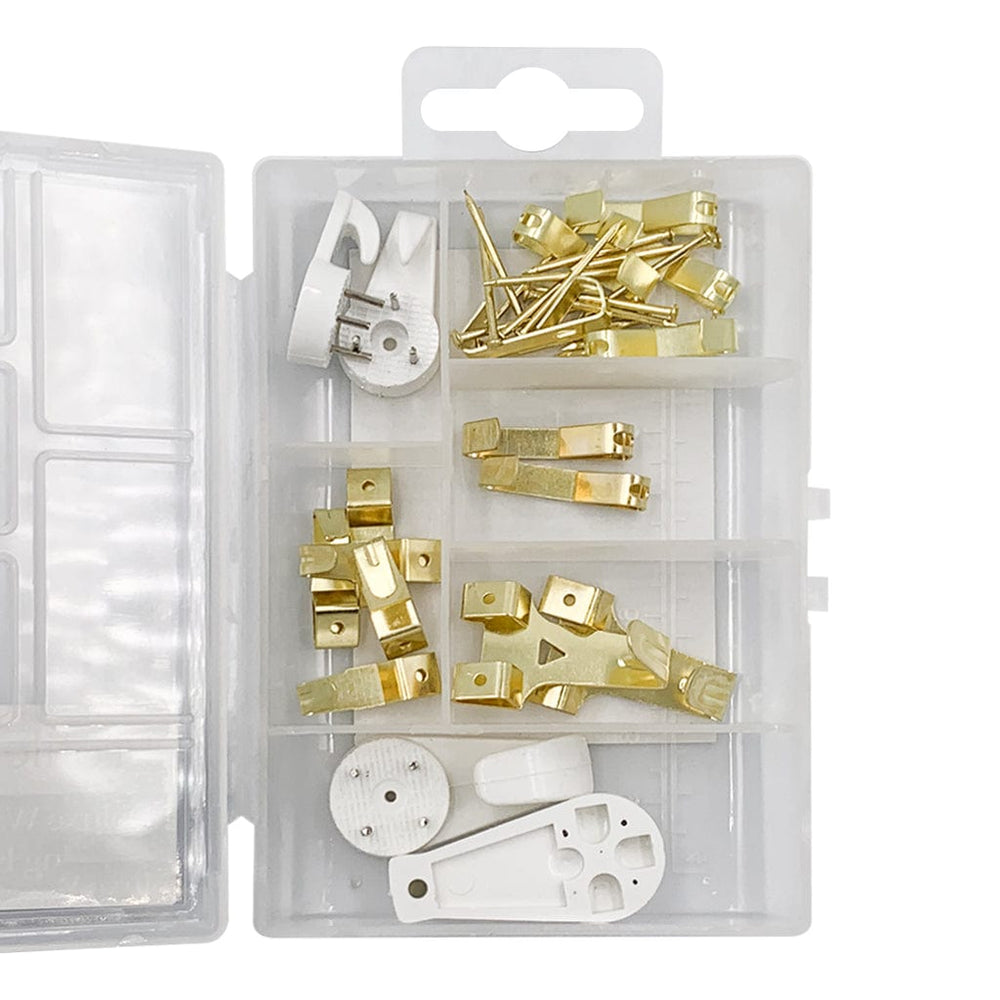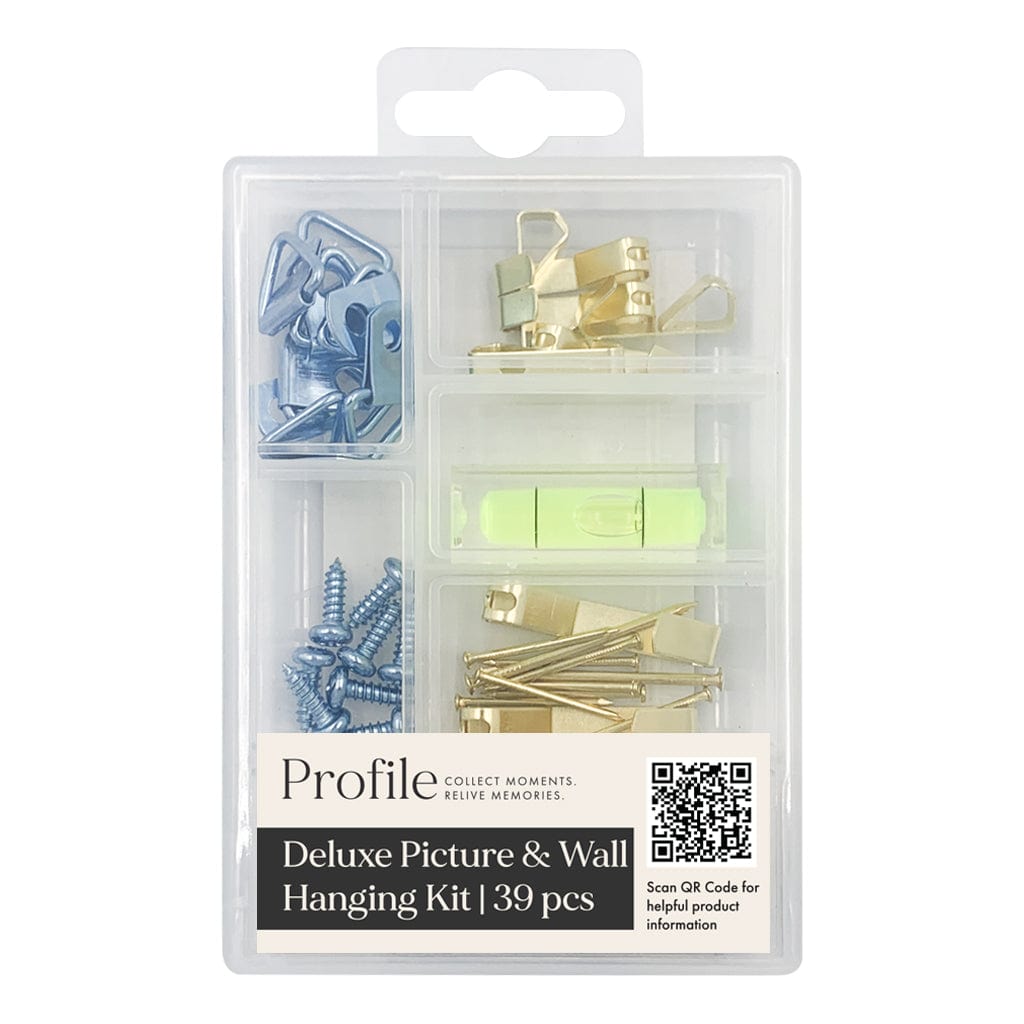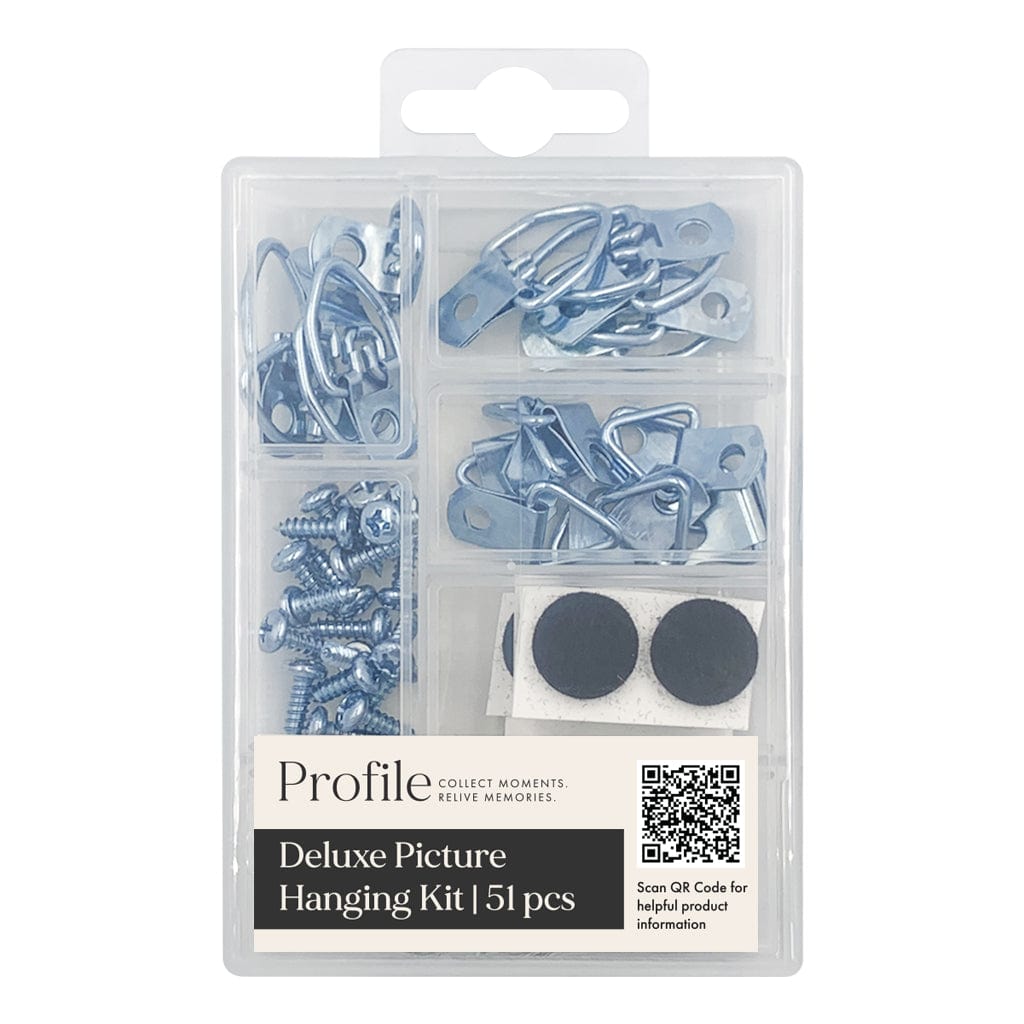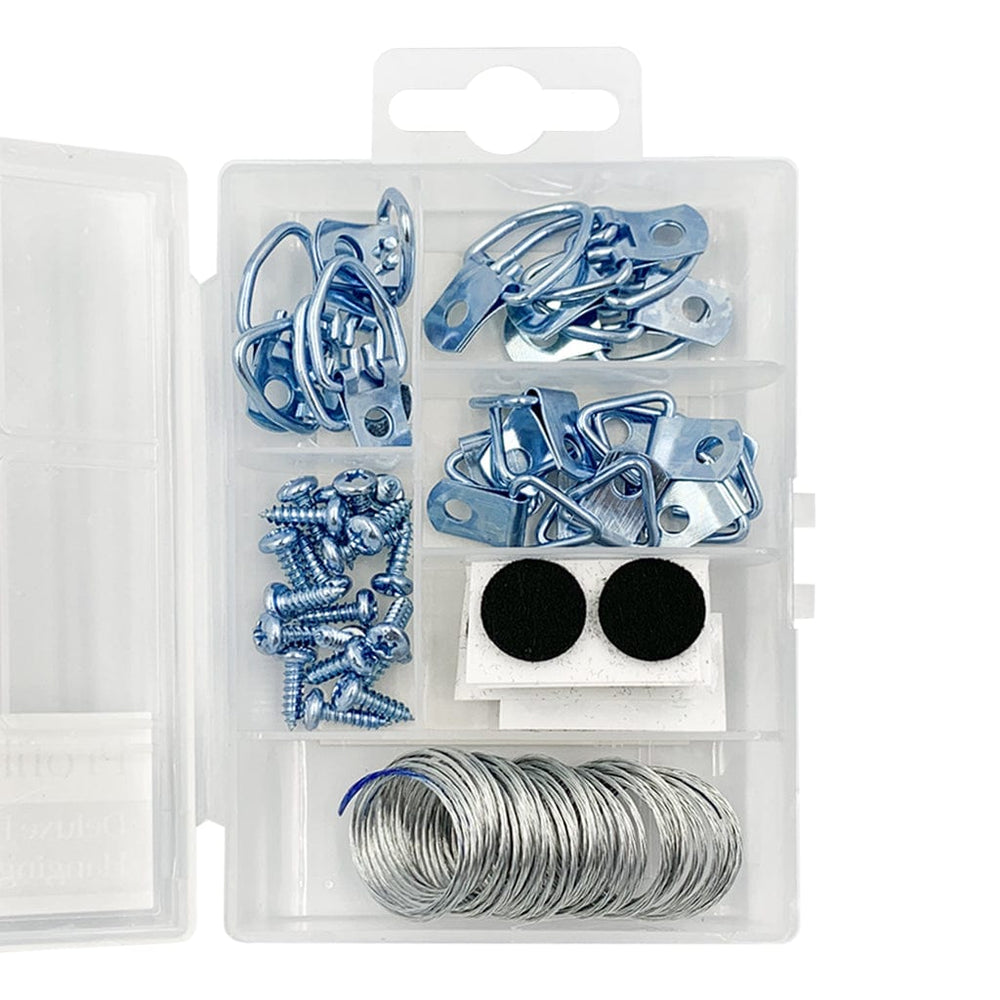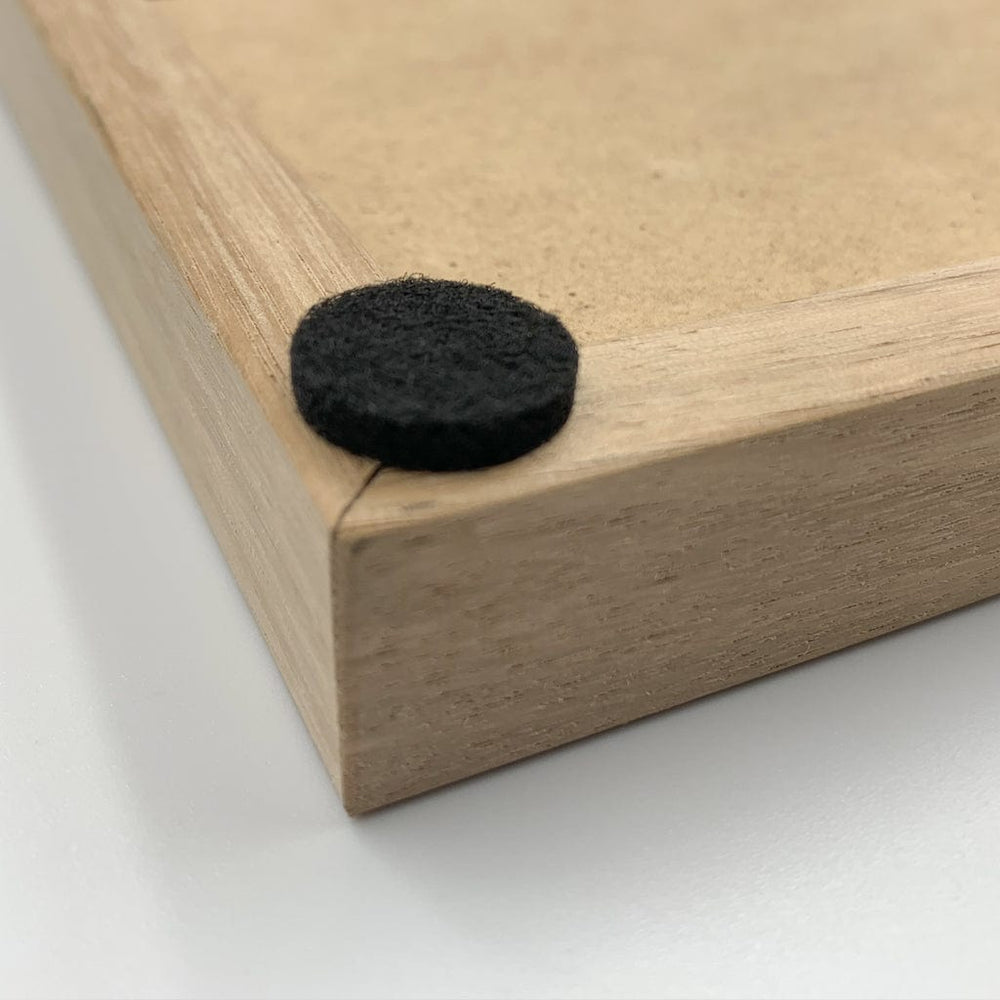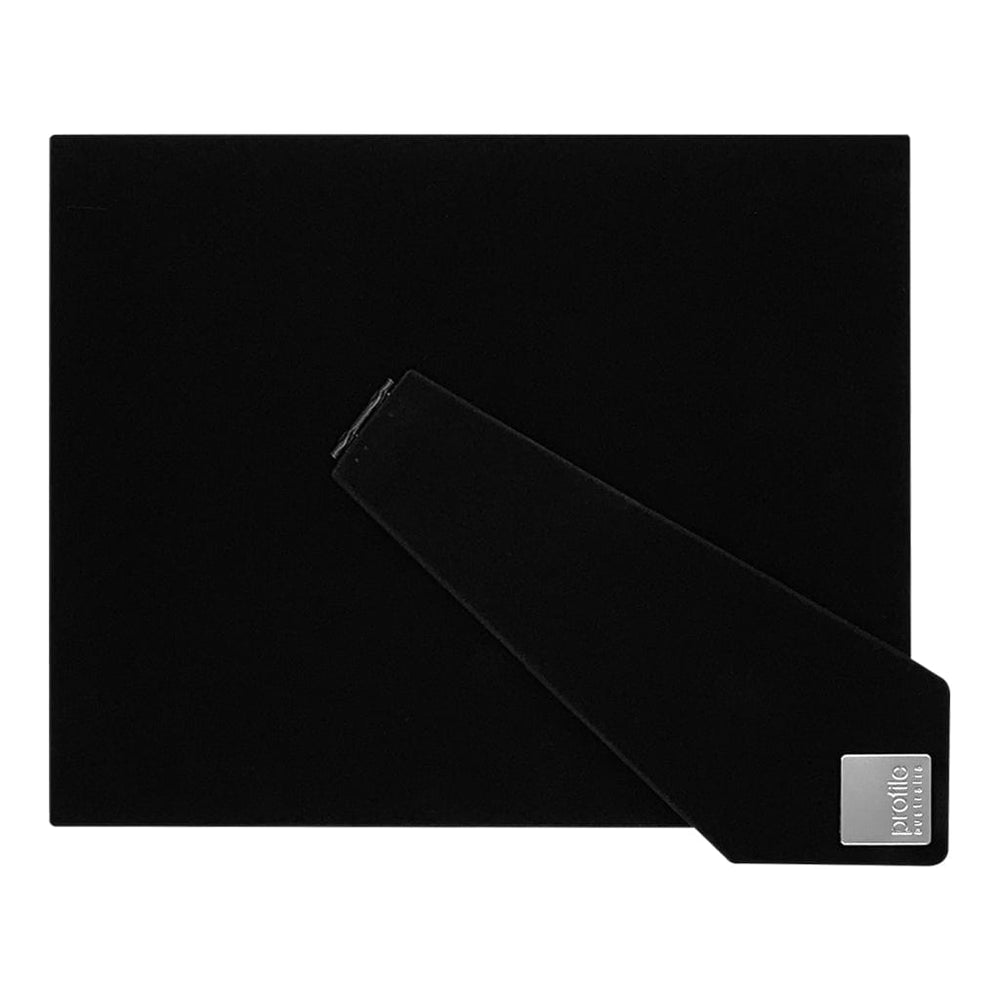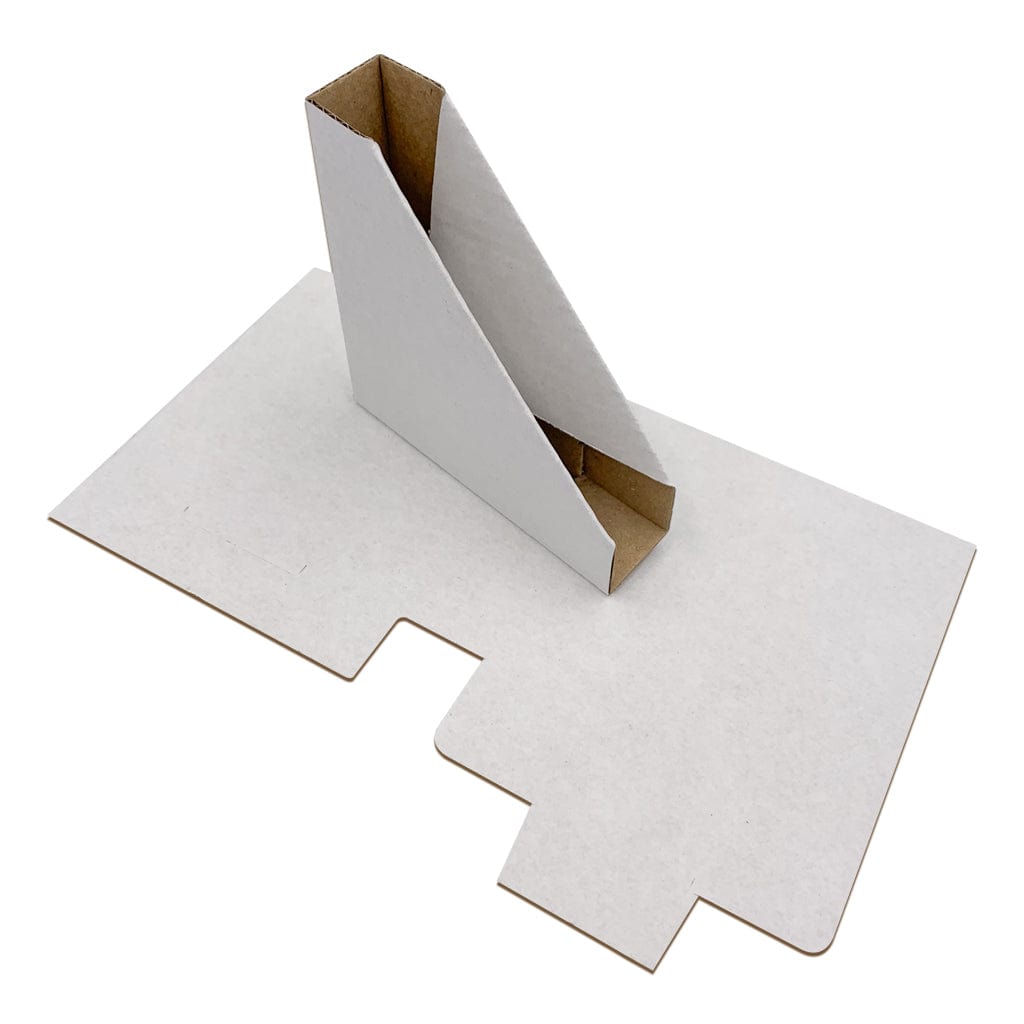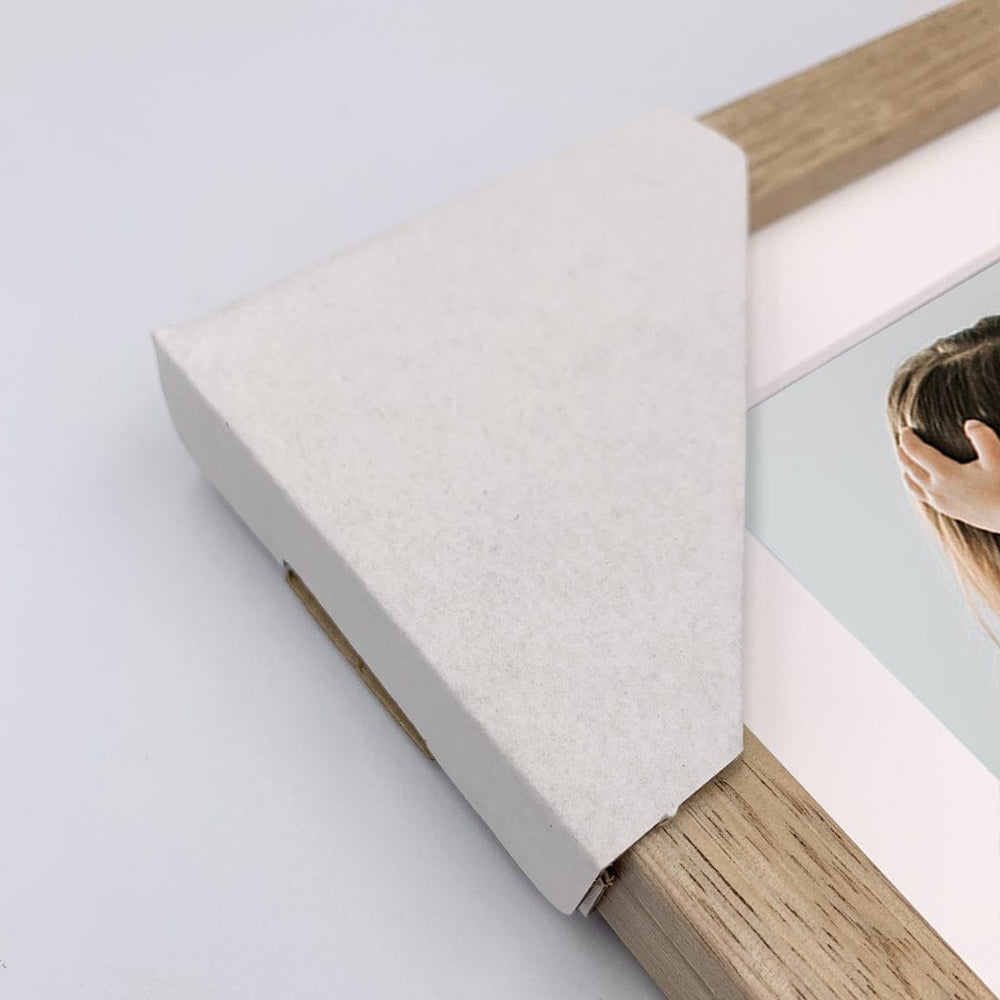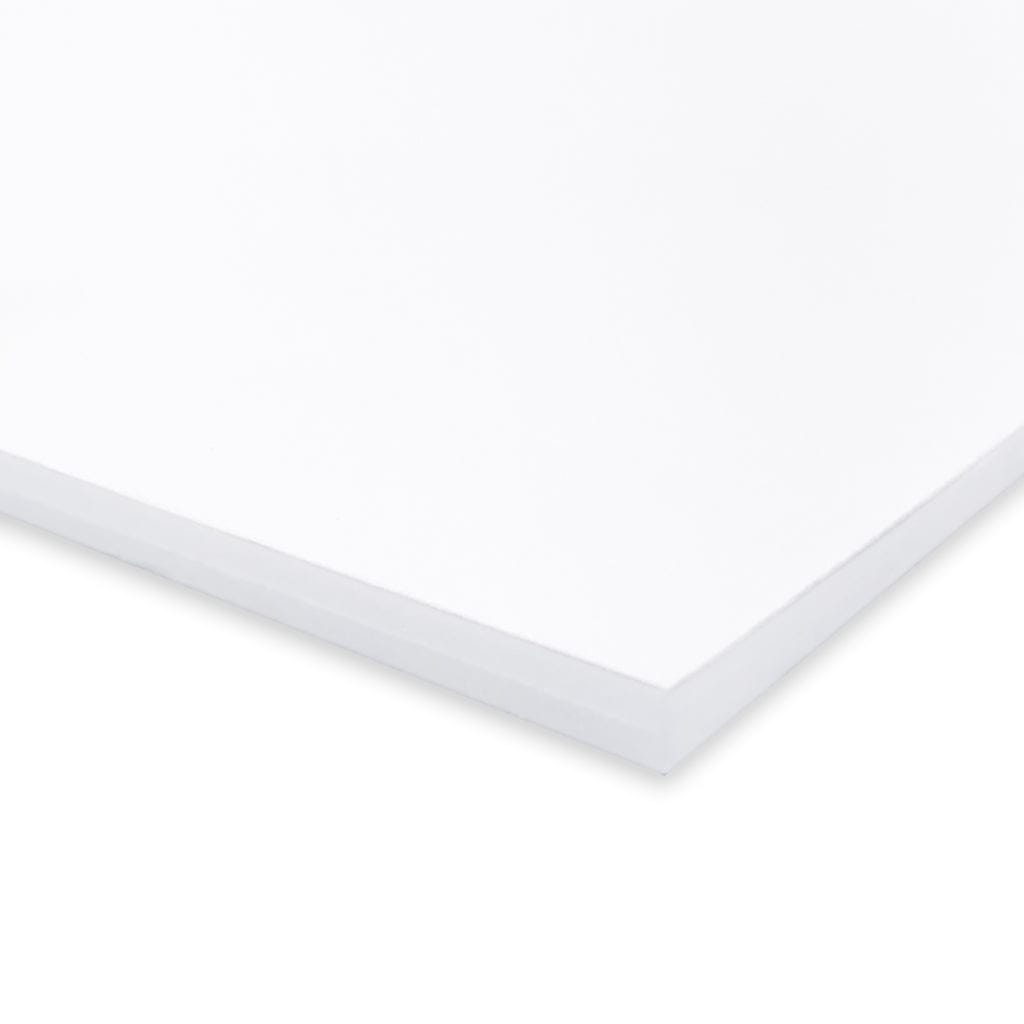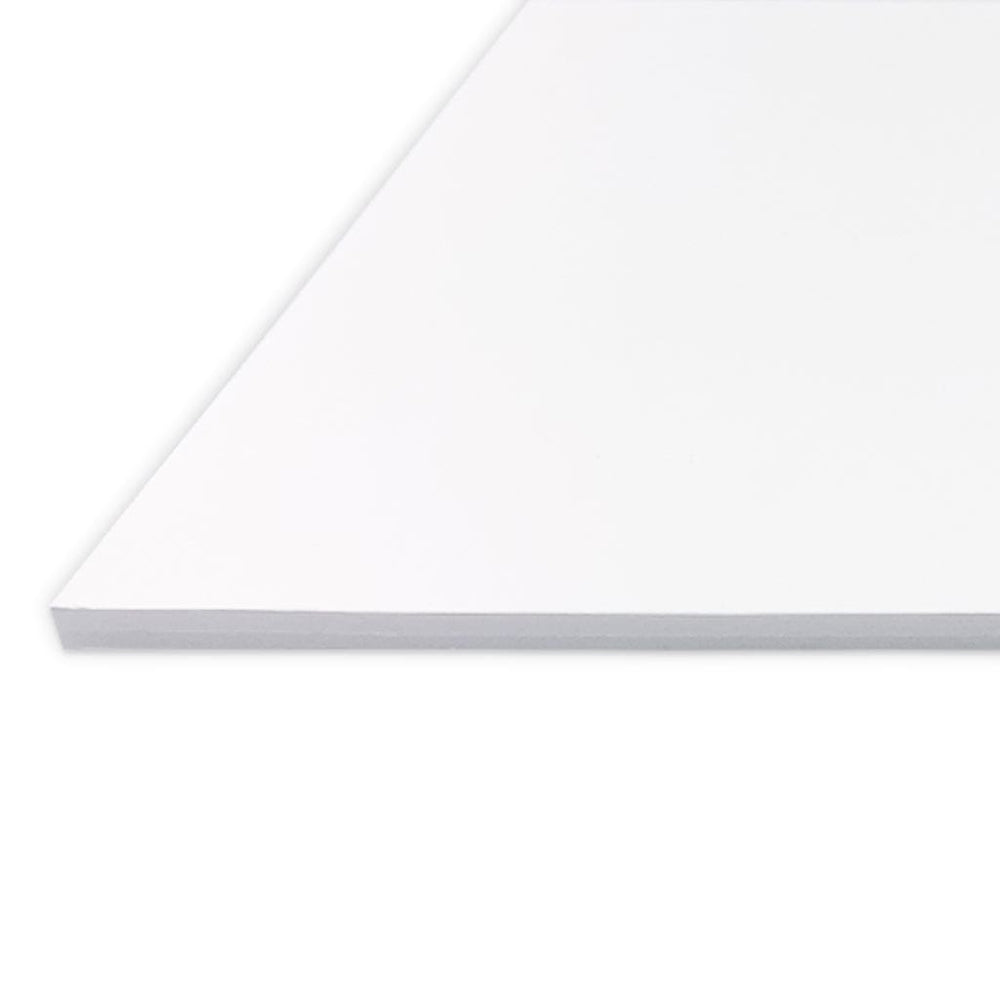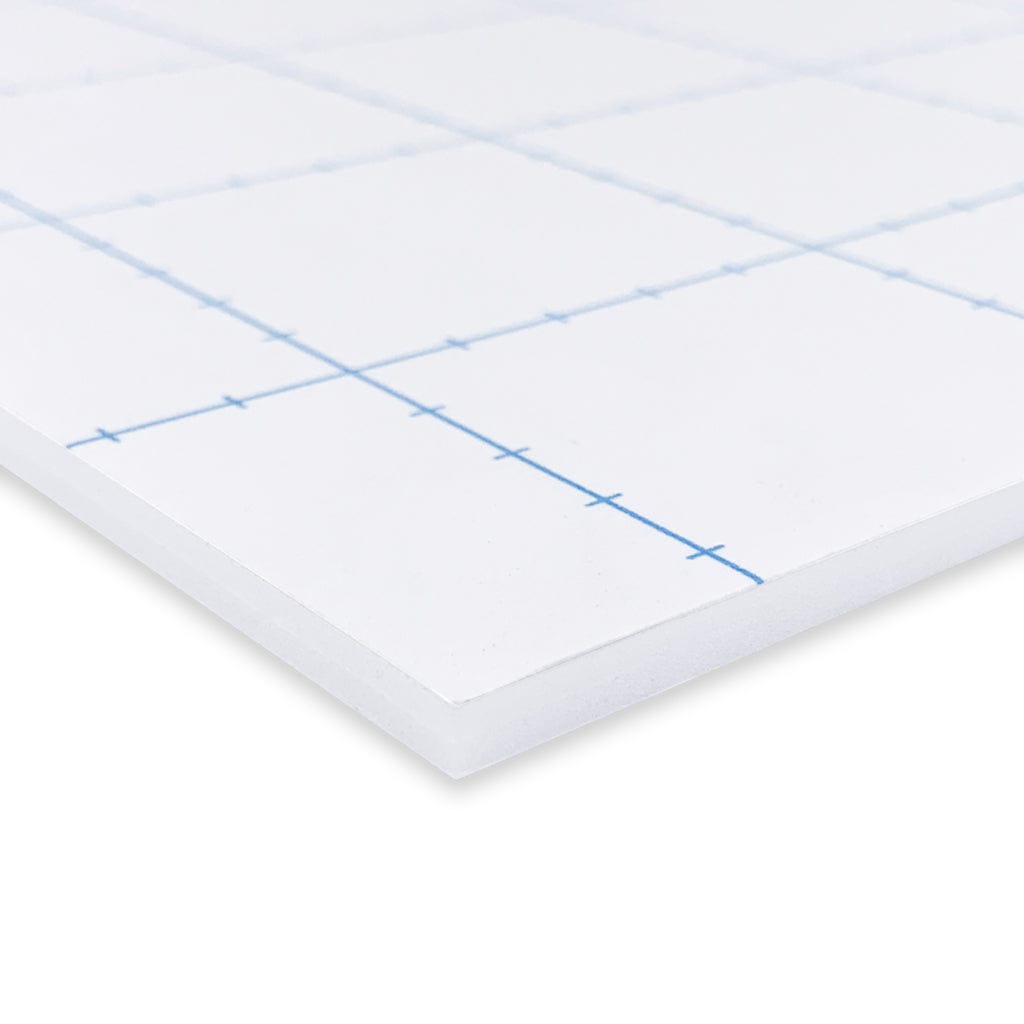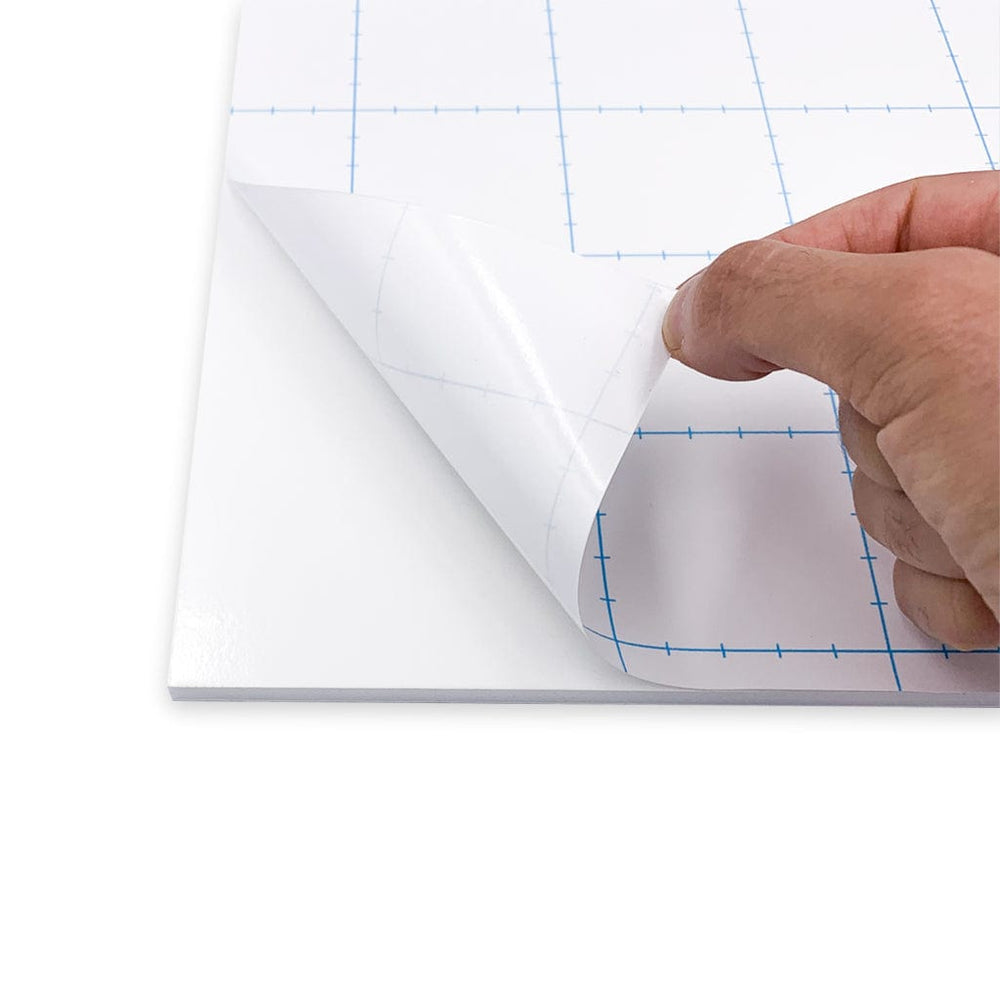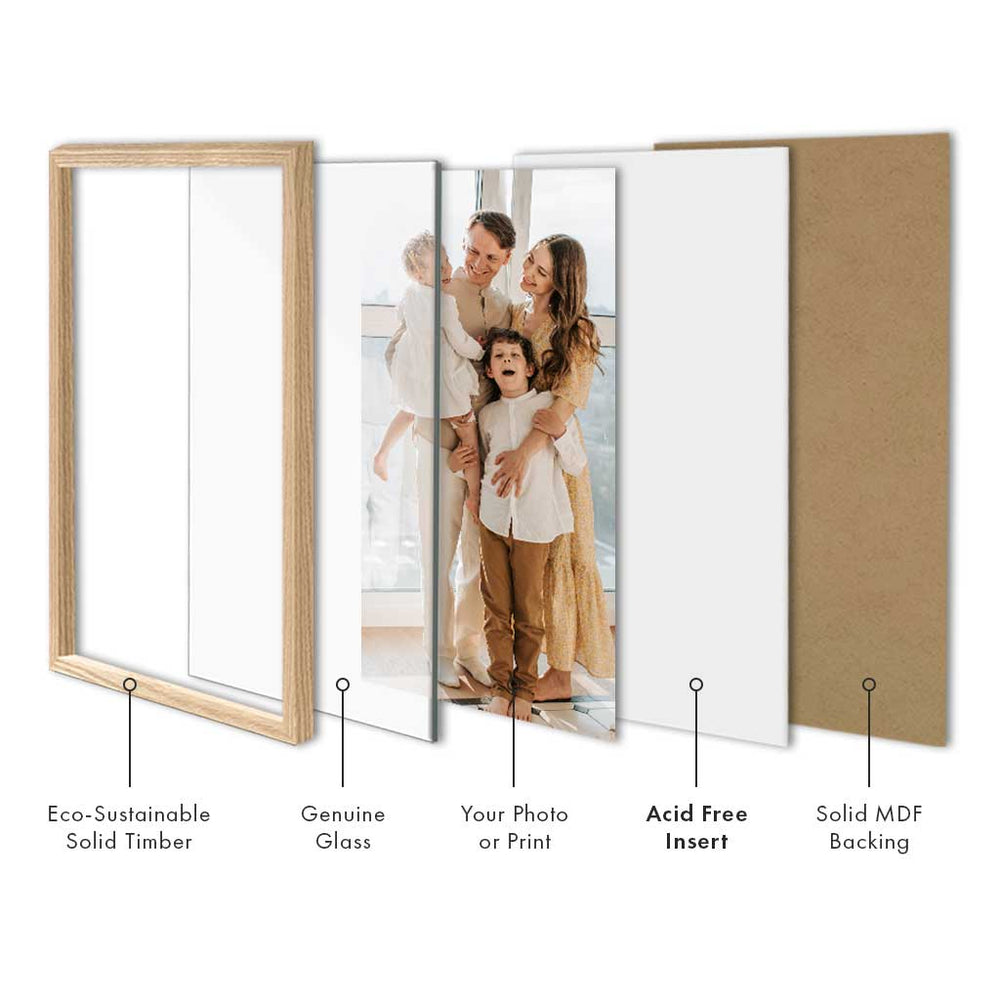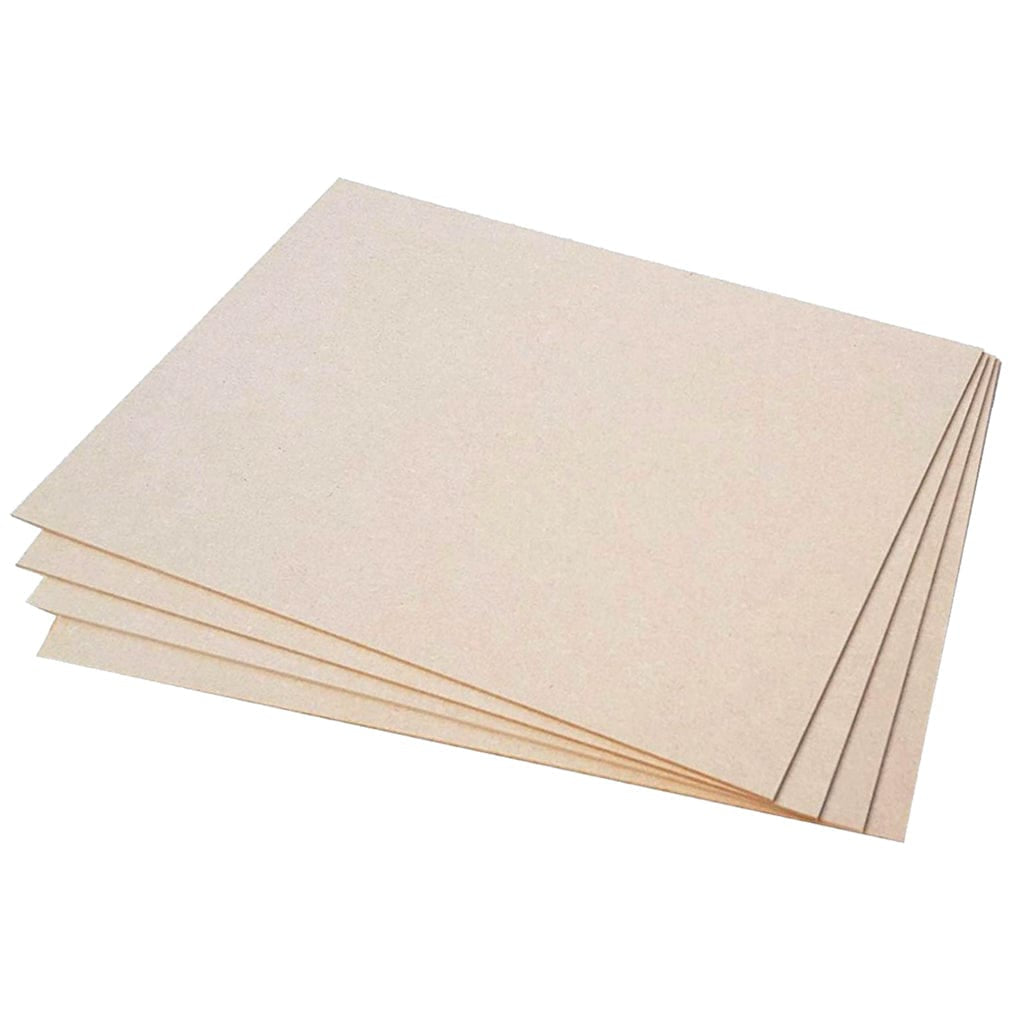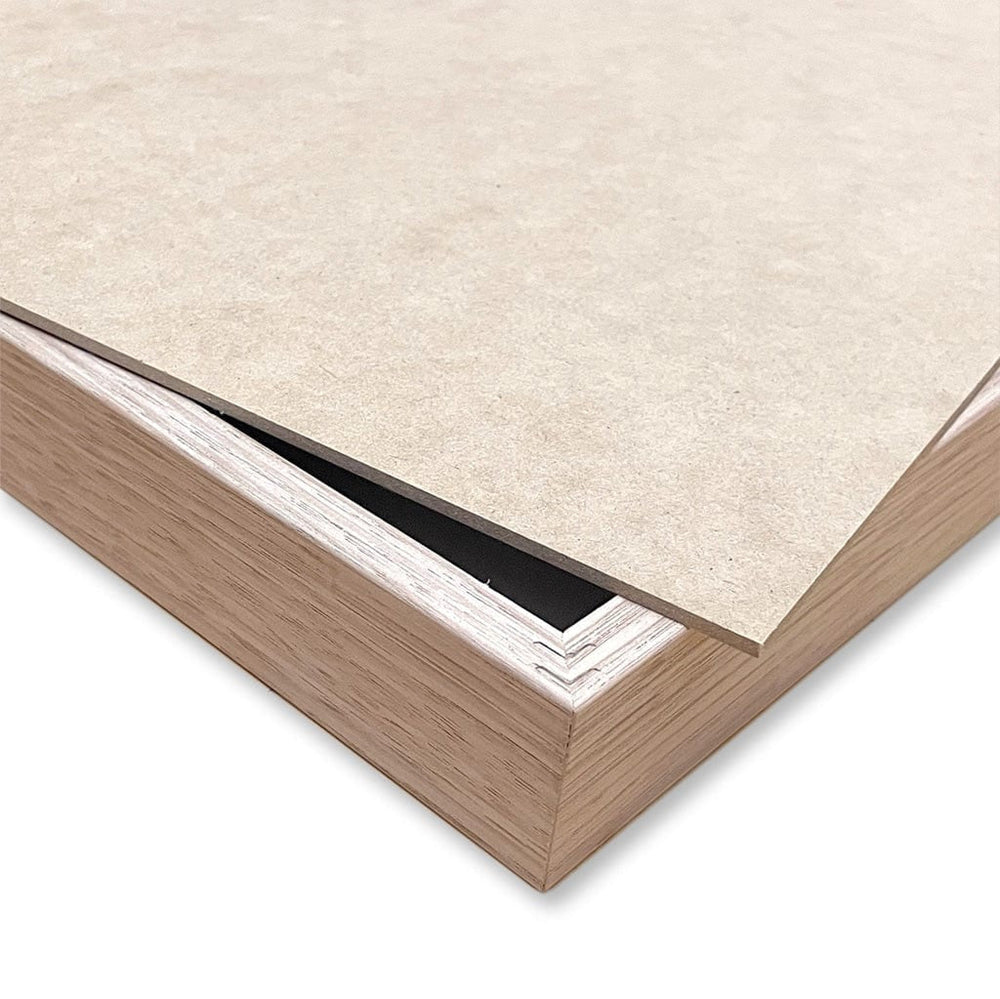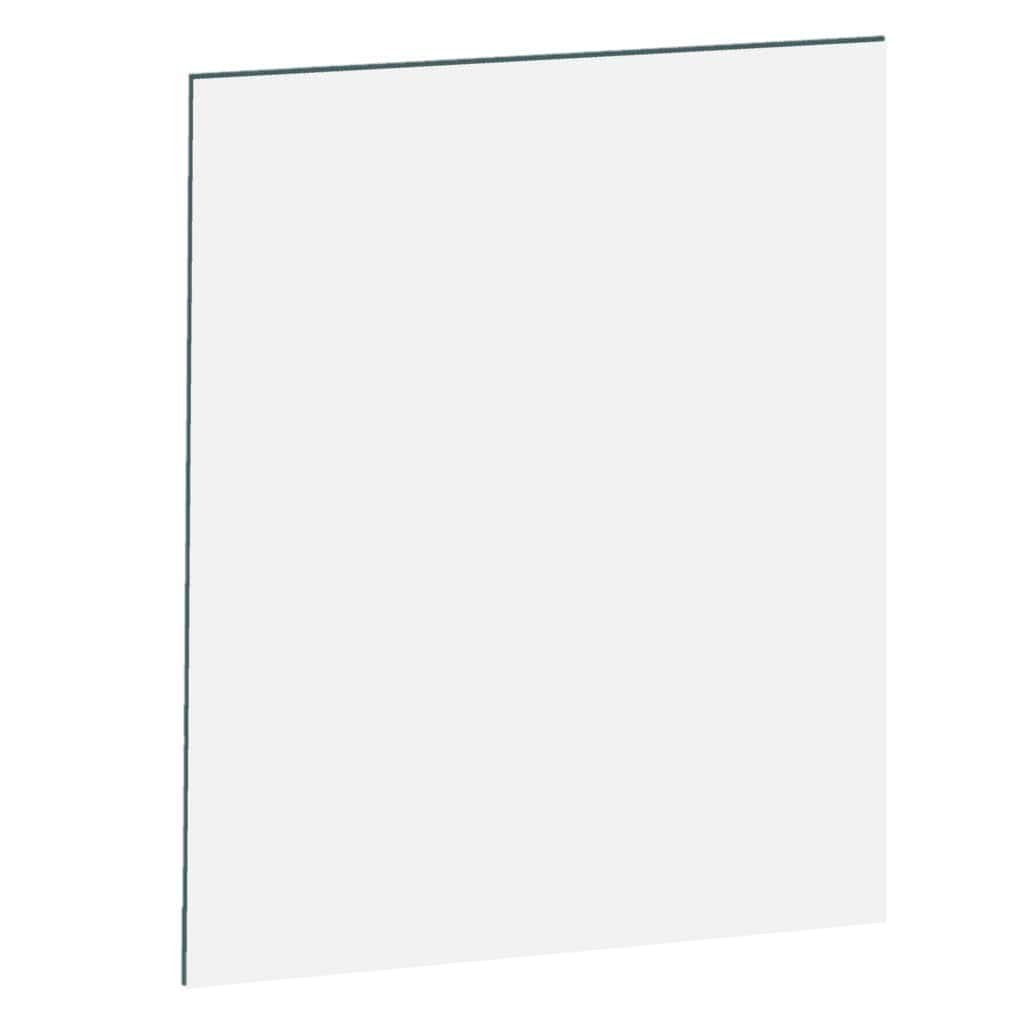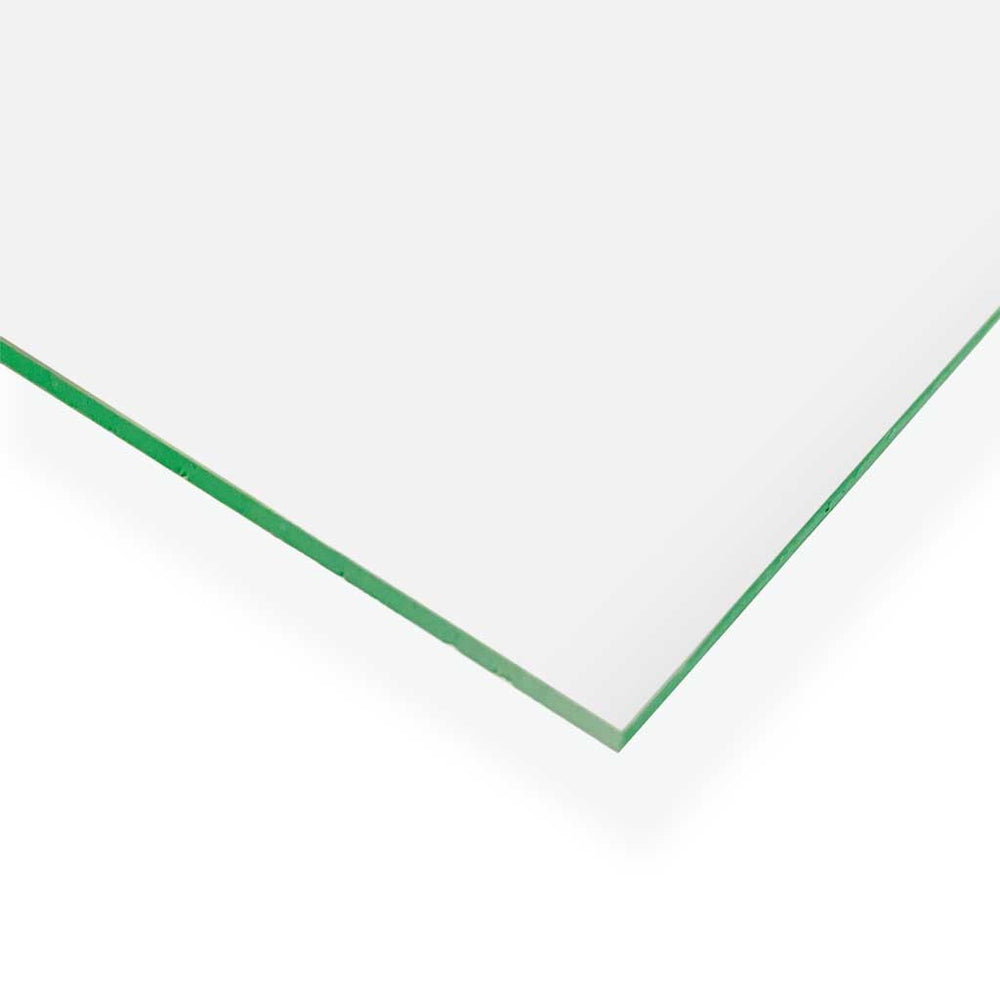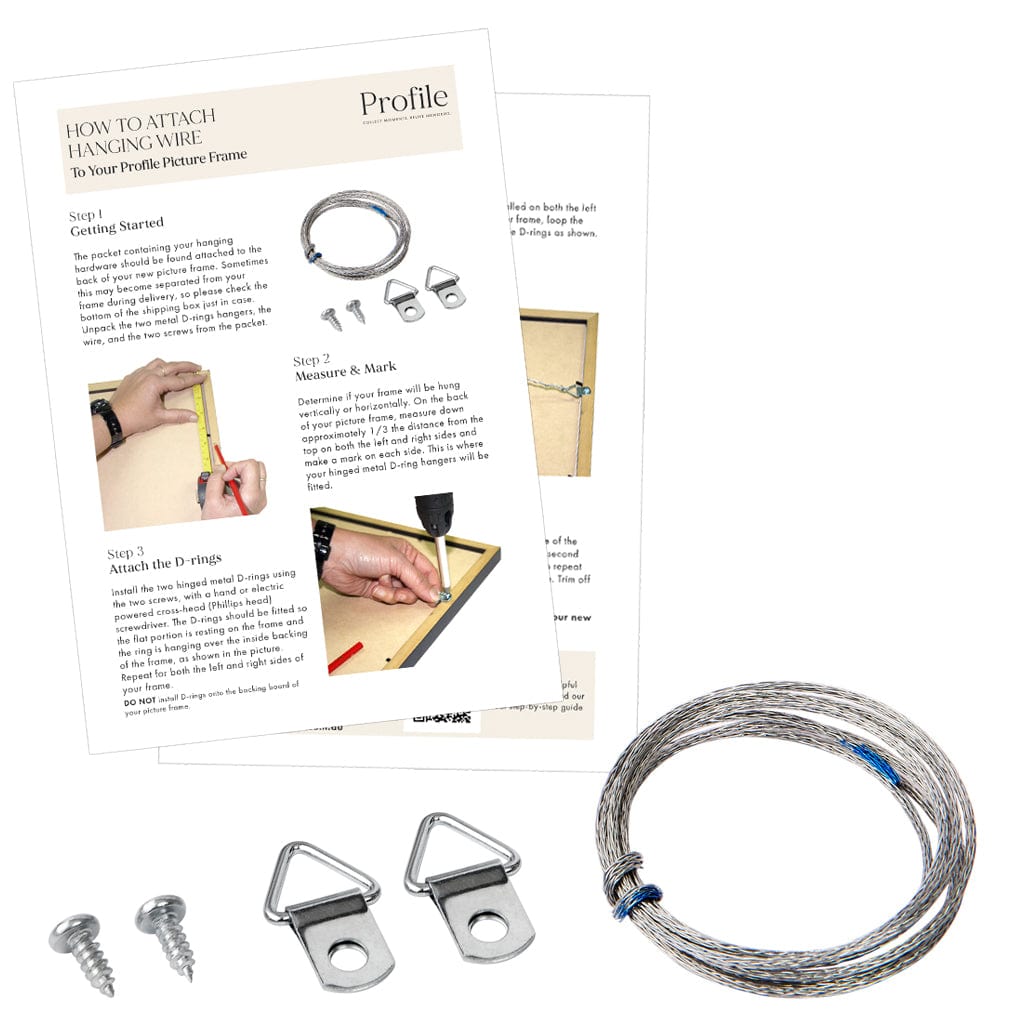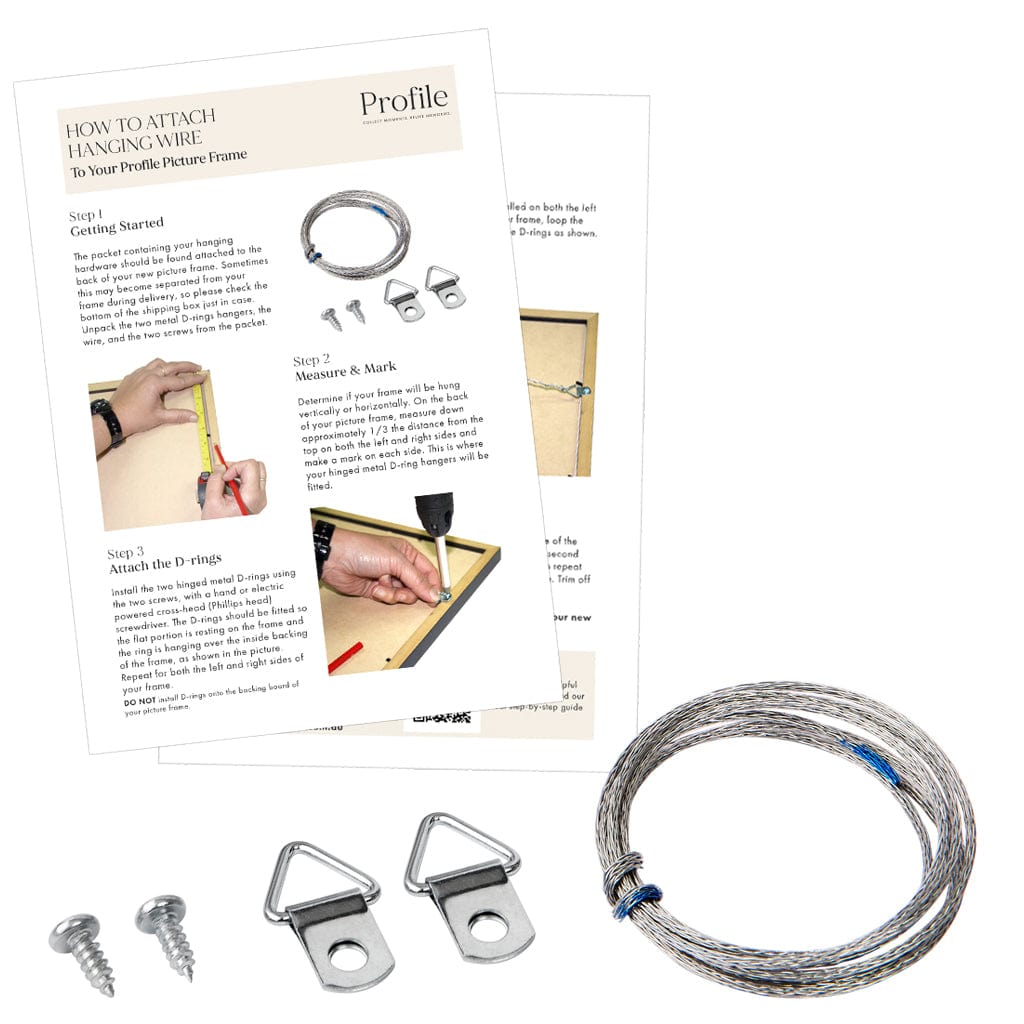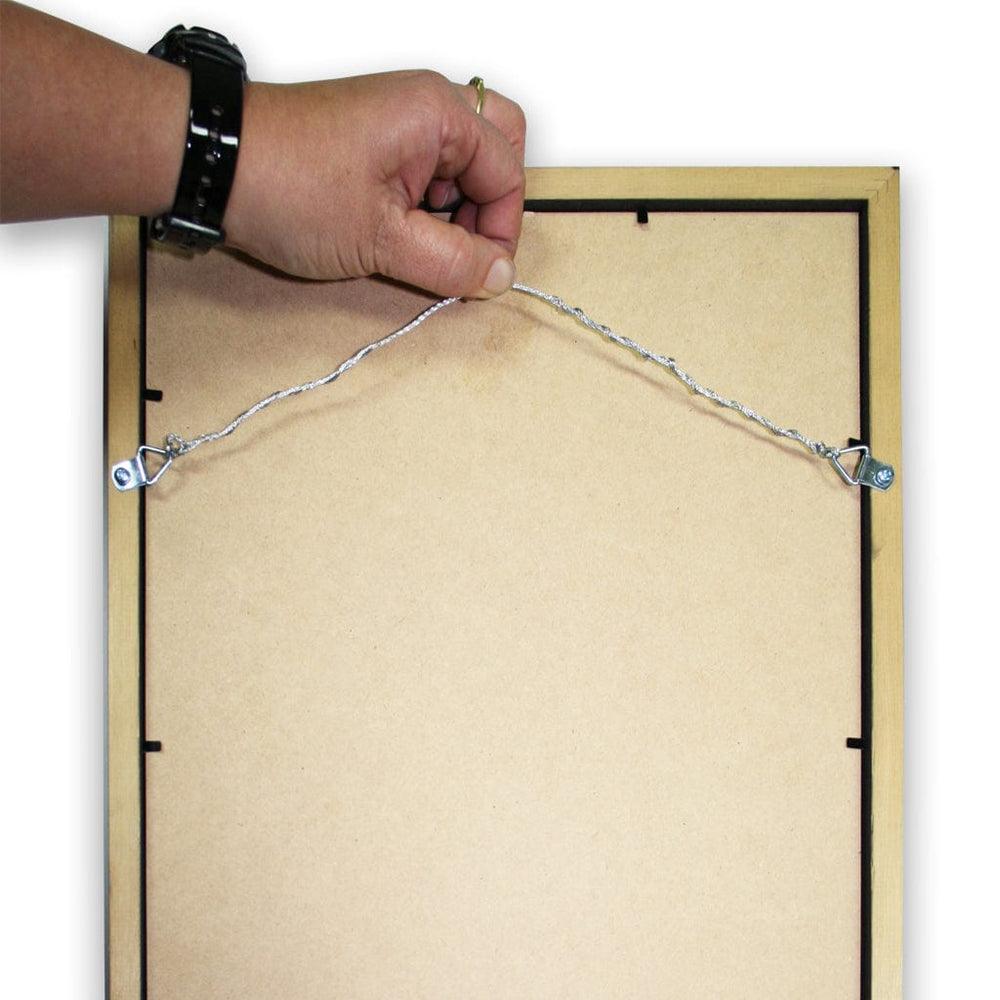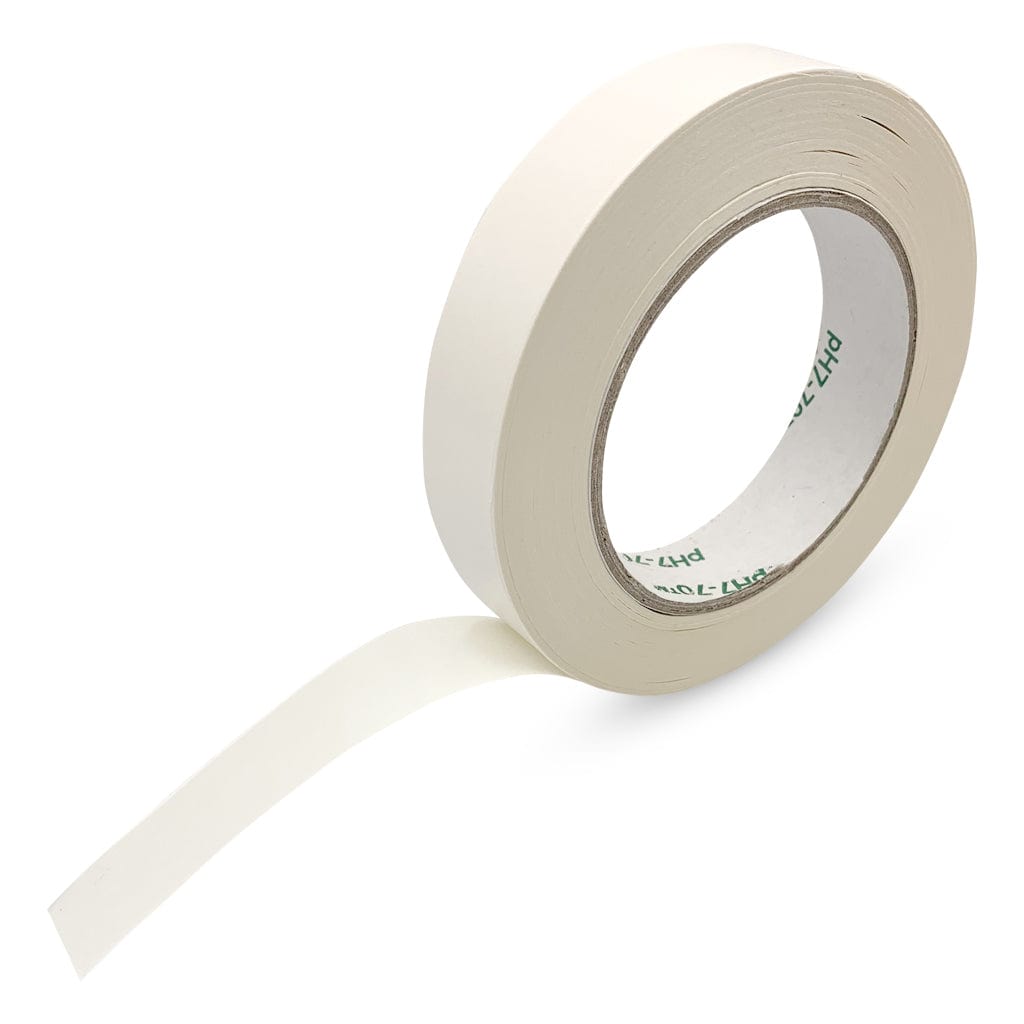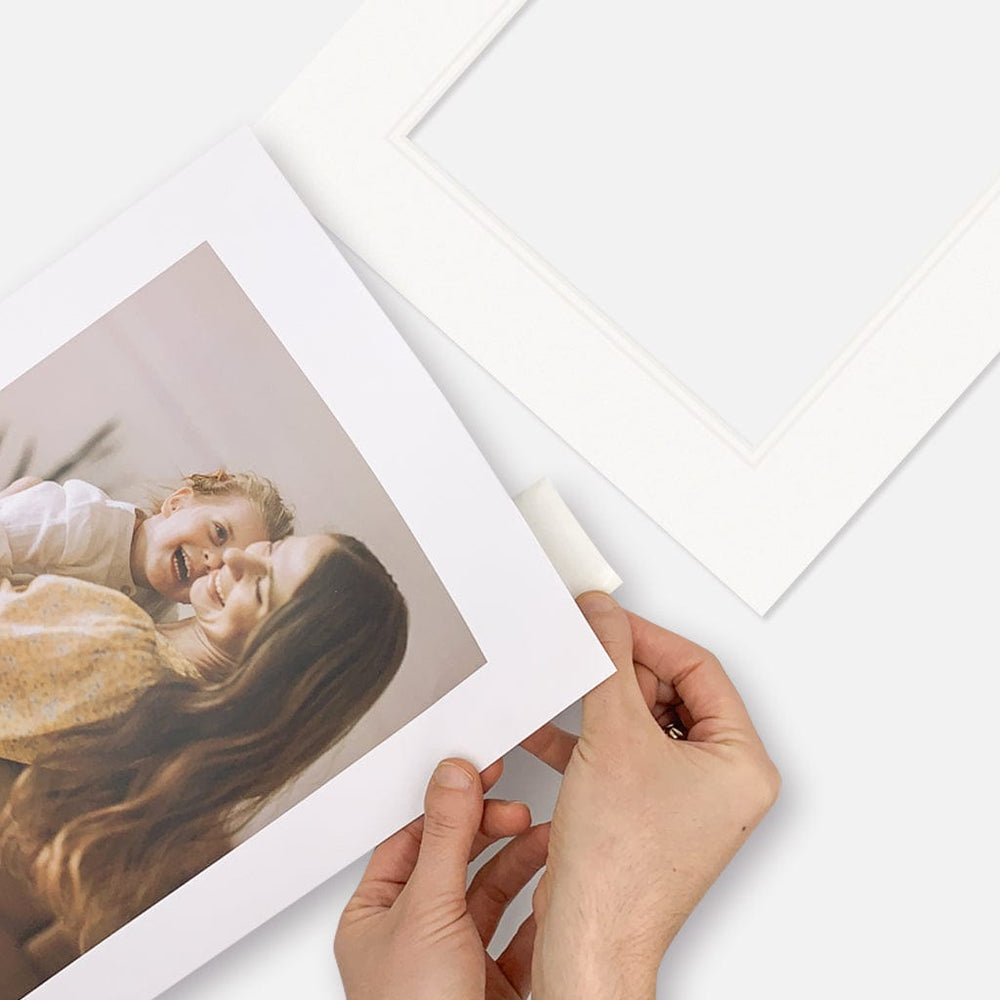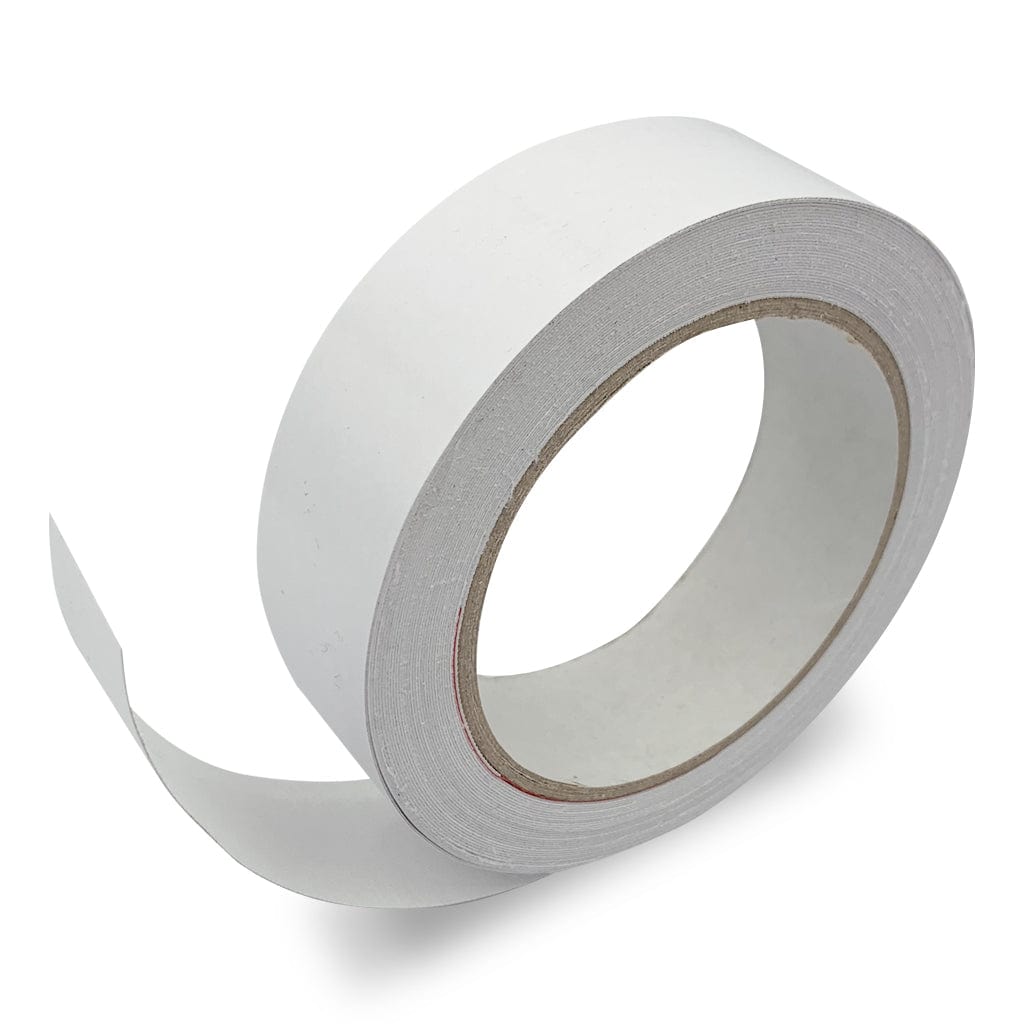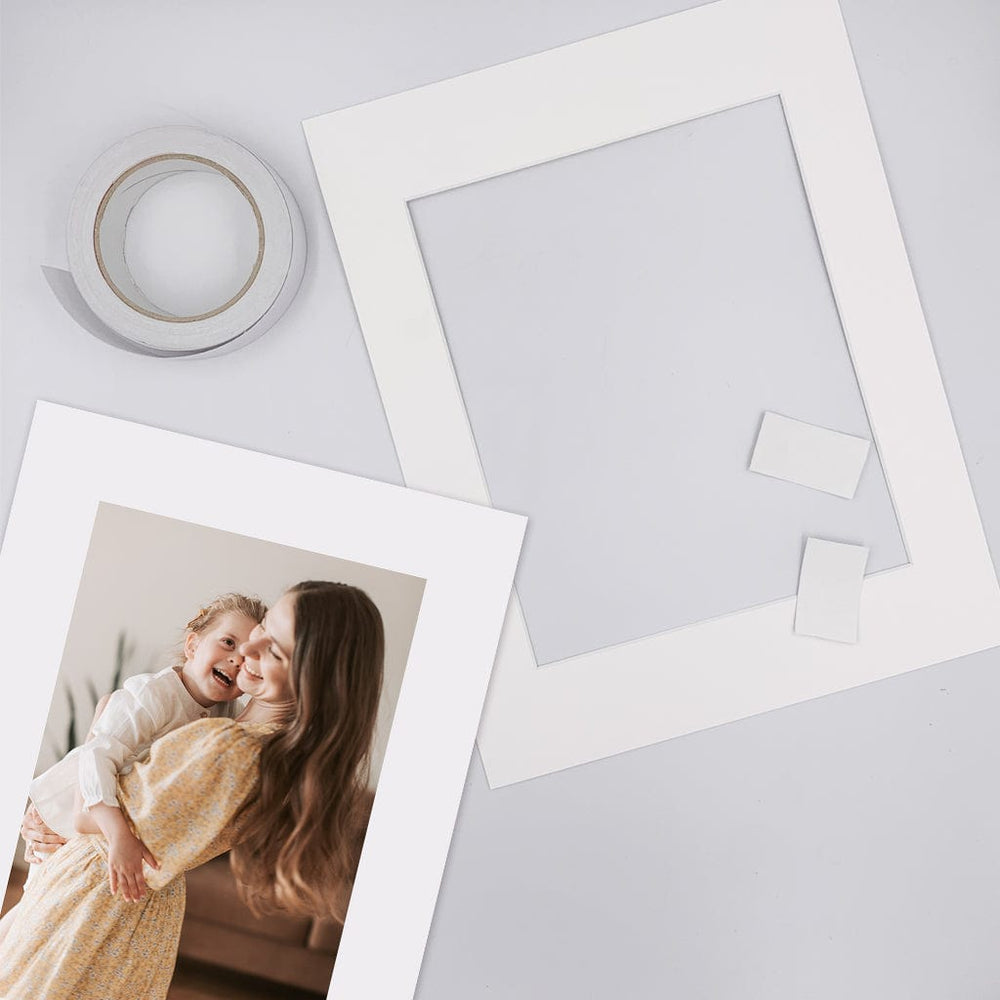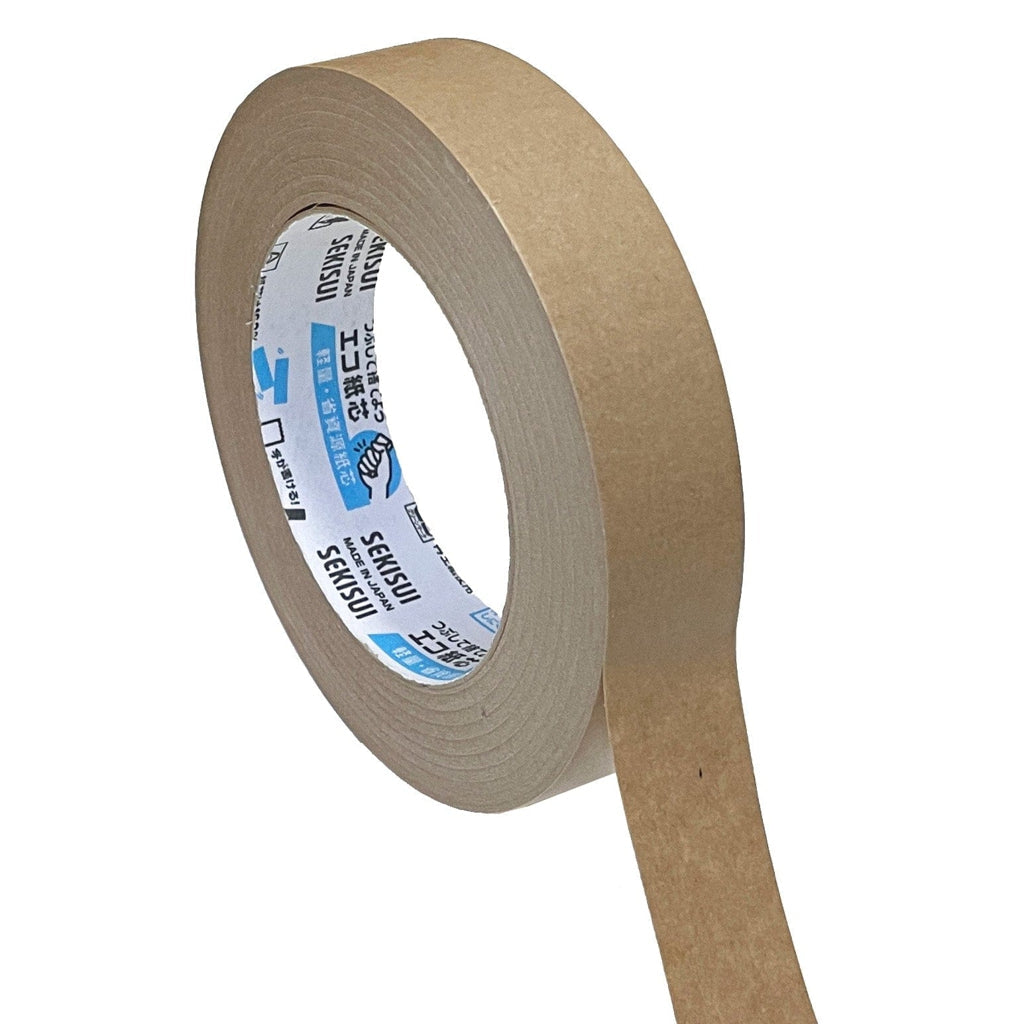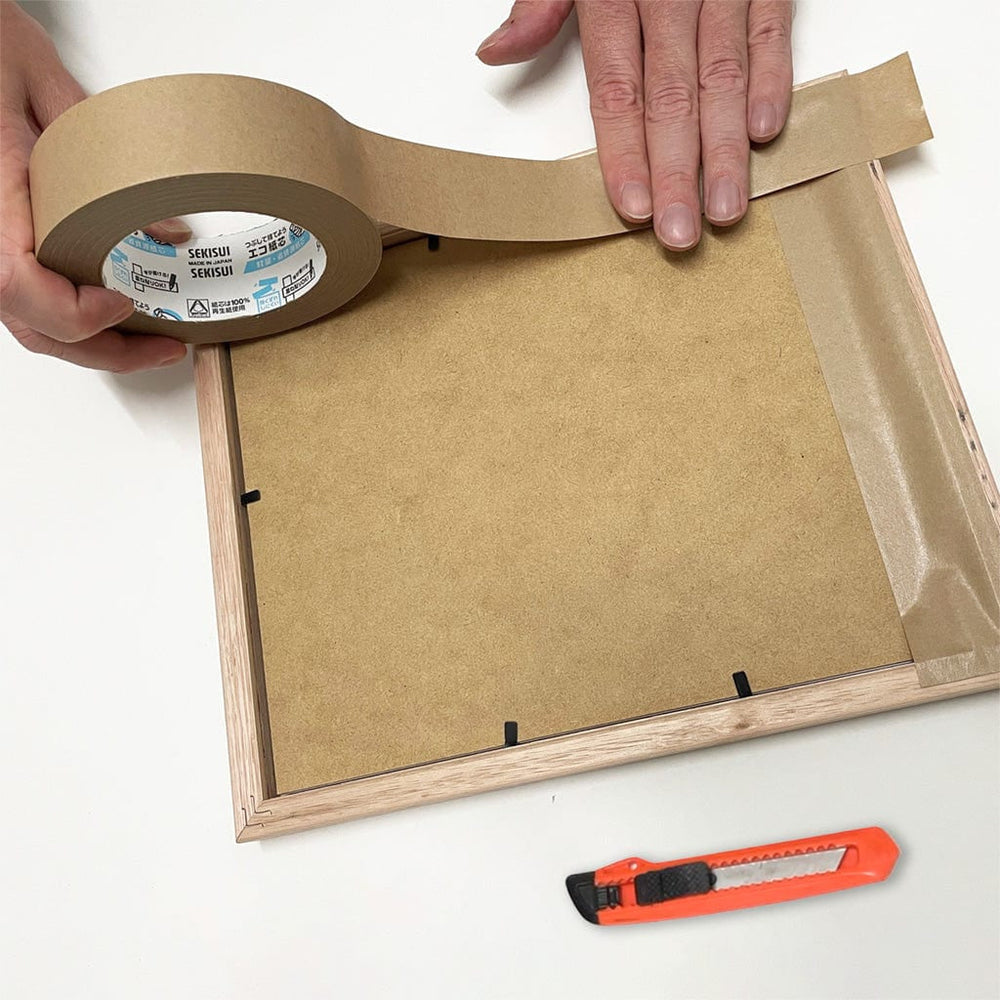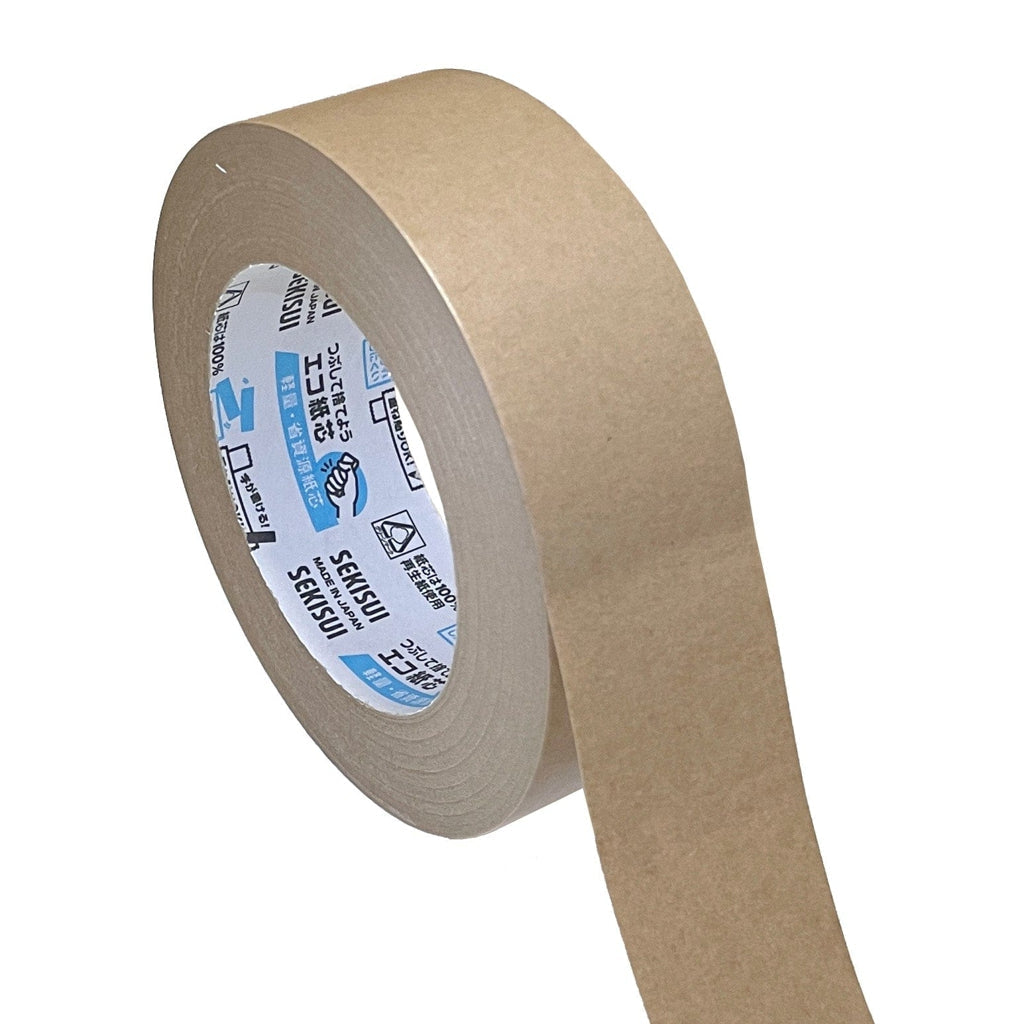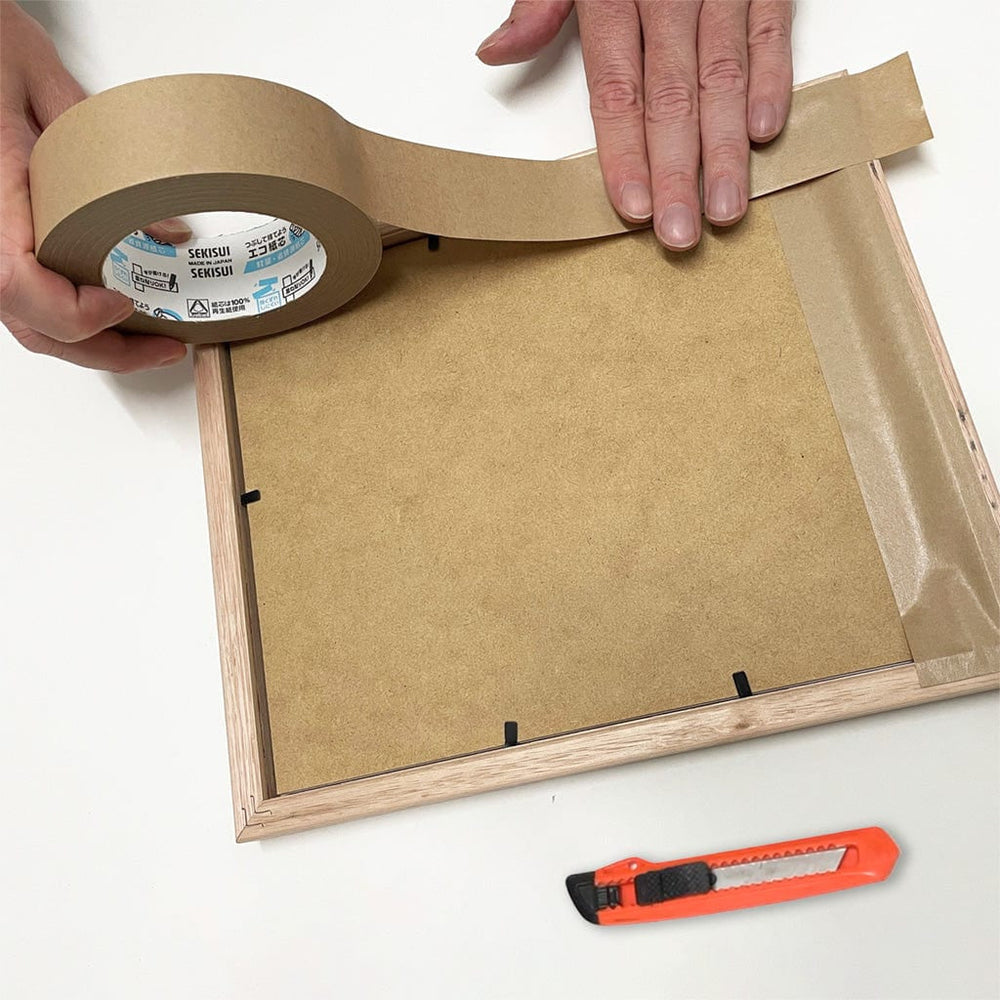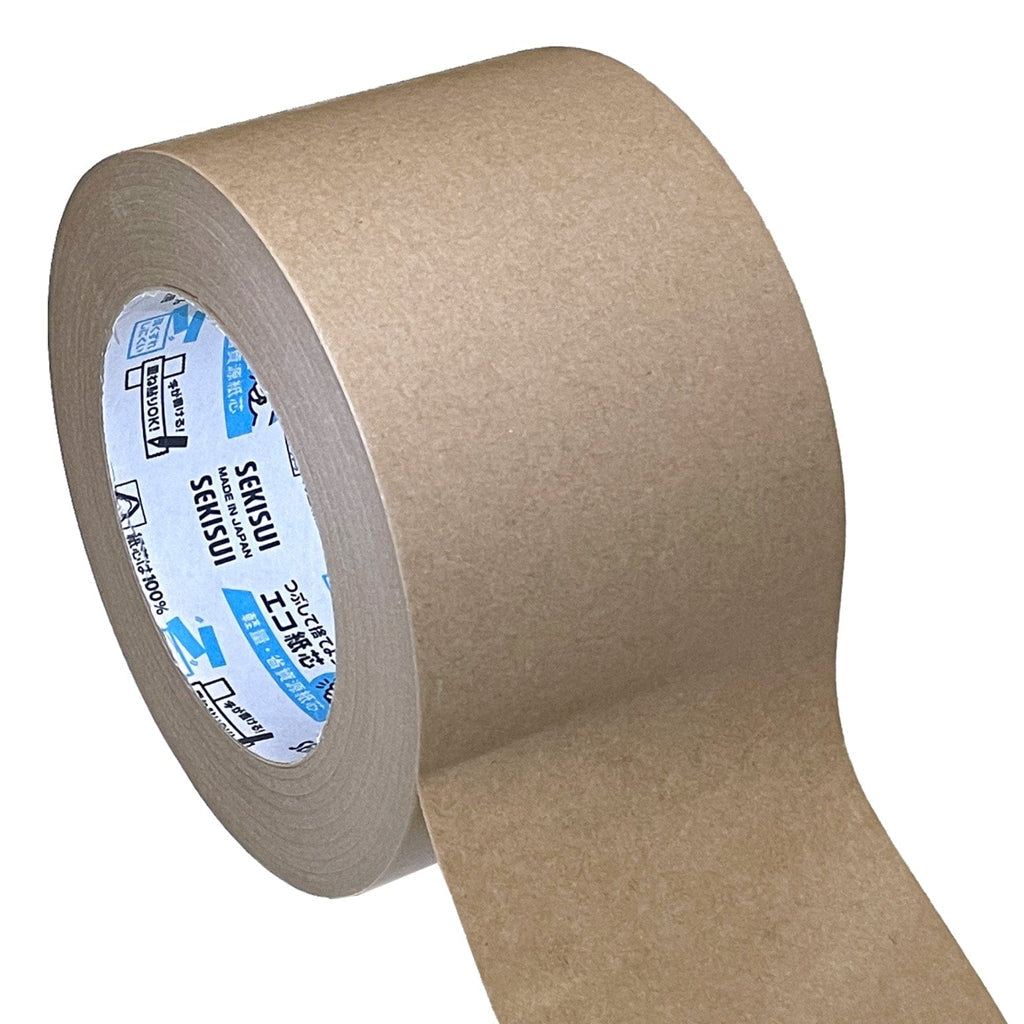Table of Contents
The Problem With One-Hook Hanging
We’ve all seen it - a big, beautiful frame hung proudly on the wall until one day it tilts or leans forward as if it’s trying to escape. Sometimes, it even ends with that unmistakable midnight thud. Most people hang large frames with a single hook out of convenience or habit, but it’s one of the most common causes of crooked, unstable, or damaged artwork.
When a large frame hangs from one hook, the entire weight - plus the added weight of glass - is focused on a single point. That pressure puts strain on the hanging wire, D-rings, and the frame’s top rail. Over time, this uneven pull can cause the wire to stretch, the hardware to loosen, or the frame itself to warp or crack. And if the hook or nail gives way, it can mean shattered glass and damaged artwork.
In short: one hook might hold for a while, but it won’t hold forever.
Why Large Frames Need Two Hooks
The solution is beautifully straightforward - use two hooks instead of one.
By hanging your frame from two wall hooks, you instantly double the support. Each hook carries only half the load, distributing the frame’s weight evenly and reducing tension on the wire and fixings. The result is a stable, balanced, and level frame that stays that way.
This is exactly how professionals do it - from framers and galleries to interior designers installing artworks in homes and commercial spaces.
As a rule of thumb, any frame wider than 60 cm (roughly an A2 frame displayed horizontally, or any A1 or A0 size) should always be hung on two hooks. Even for lighter pieces, two hooks add extra safety and peace of mind.
Think of it as good engineering sense: two points of contact create balance, prevent twisting, and stop that gradual tilt that drives perfectionists crazy.
If you’re choosing new pieces for your space, browse our curated collections of Decorator Wall Art Prints and Photo & Picture Frames to find beautiful frames worth hanging the right way.

The Science Behind Two Hooks – Less Stress, More Stability
Let’s add a little science to the art of hanging. The physics of wire angles explains why two hooks are always safer and smarter for large frames.
One Hook: Shallow Wire Angle = High Stress
- A single hook creates a shallow wire angle-usually around 5° to 20° from horizontal.
- This multiplies the tension on the wire and D-ring anchors, increasing strain on both sides.
- The closer the wire is to horizontal, the more the pulling force increases.
- A 10 kg frame hung this way can generate more than 19 kg of force on each side.

Two Hooks: Steeper Wire Angle = Less Stress
- Using two hooks spaces the support points apart, creating a steeper wire angle (around 60°).
- Each hook now bears only about half the frame’s total weight, reducing tension dramatically.
- Less strain means lower risk of stretched wire, snapped fixings, or pulled screws.
- In simple terms: steeper angles distribute force vertically, while shallow ones multiply it sideways.

Extra Benefits for Frame Longevity
- Two hooks minimise side pressure on the top rail, preventing bowing or distortion.
- This is especially crucial for timber or frames with glass, which can warp or crack under tension.

- Whether it’s an A1 wall art print, framed mirror, or cherished family portrait-two hooks keep it level, balanced, and built to last.
- Below is a helpful reference table demonstrating how the angle of the hanging wire affects the load on each hanger for common frame sizes:
| Wire Angle (°) |
A2 Frame (2.4kg / 5.3lb) Load on each hanger |
A1 Frame (4.8kg / 10.6lb) Load on each hanger |
A0 Frame (9.6kg / 21.2lb) Load on each hanger |
|---|---|---|---|
| 5° | 13.8 kg /30.4lb | 27.6 kg / 60.8lb | 55.1 kg / 121.5lb |
| 15° | 4.7 kg / 10.4lb | 9.3 kg / 20.5lb | 18.6 kg / 41lb |
| 30° | 2.4 kg / 5.3lb | 4.8 kg / 10.6lb | 9.6 kg / 21.2lb |
| 45° | 1.7 kg / 3.7lb | 3.4 kg / 7.5lb | 6.7 kg / 14.8lb |
| 60° | 1.4 kg /3.1lb | 2.8 kg / 6.2lb | 5.6 kg / 12.3lb |
This clearly shows that as the wire angle increases (close to vertical), the load on each hook drops dramatically - highlighting why two hooks make such a difference.
Keep It Straight – How Two Hooks Stop Tilting and Twisting
A frame that won’t stay level can be frustrating. Hanging from one hook gives gravity too much freedom, pulling the frame’s weight downward and forward until that single point of contact becomes a pivot. Over time, the result is predictable - a picture that slowly drifts off balance and leans away from the wall, no matter how many times you straighten it.
Why One Hook Causes Tilting
- A single hook allows the wire to move freely, making it easy for one side to slip lower than the other.
- The frame’s top edge becomes a lever, pulling forward as the tension changes.
- Even small shifts can make the frame look crooked or cause it to rest unevenly against the wall.
How Two Hooks Solve the Problem
- Two hooks lock the frame’s position in place, holding it steady on both sides.
- The frame can’t rotate or swing, which keeps it perfectly horizontal.
- The top rail stays flush against the wall, giving a neat, professional appearance.
Pro Tip for Perfect Alignment
- Space the two hooks roughly one-third of the frame’s width apart.
- Use a spirit level or laser level to mark both hook points accurately.
- Measure twice, hammer once-it’s worth it for a result that looks gallery-quality every time.

When to Use Two Hooks (and When One Is Enough)
Not every frame demands two hooks - but knowing when to use them can make all the difference. The rule of thumb is simple: the larger, heavier, or more valuable the frame, the more support it needs.
Use Two Hooks For:
- Large or heavy frames: A1, A0, or any frame weighing more than 5 kg.
- Wide artworks: Anything over 60 cm wide, such as landscape-oriented A2 frames.
- Real glass or deep timber frames: These carry extra weight and need stable support.
- Valuable or irreplaceable pieces: Family heirlooms, signed prints, or custom artwork deserve extra protection.
One Hook Is Fine For:
- Small, lightweight frames: A4 or smaller, especially with acrylic glazing instead of real glass.
- Compact pieces in low-traffic areas: Such as small prints or certificates.
For quick reference:
| Frame Size | Approx. Weight | Recommended # of Hooks |
|---|---|---|
| A4 (21×29.7 cm) | ~1 kg | 1 hook |
| A3 (29.7×42 cm) | ~2 kg | 1–2 hooks (depending on glass or acrylic) |
| A2 (42×59.4 cm) | ~3–4 kg | 2 hooks |
| A1 (59.4×84.1 cm) | ~5 kg | 2 hooks |
| A0 (84.1×118.9 cm) | ~9–10 kg | 2 heavy-duty hooks |
Note: Wall composition also matters. Plasterboard and gyprock walls may require wall anchors or toggle bolts, while brick or concrete walls suit screw-in hooks for maximum stability.
Practical Examples
- A framed wall art print from the Decorator Wall Art Prints collection - especially at A1 or A0 size-always benefits from two hooks.
- A framed family portrait in a solid timber frame from the Photo & Picture Frames range will hang straighter, safer, and longer using two hooks.
Think of it as investing a few extra minutes for years of secure display.
Choose the Right Hardware – Skip the Adhesive Strips
While self-adhesive hanging strips might look convenient, they’re not a long-term solution - especially for large or heavy frames. Mechanical hardware is always the safer choice.
Why Adhesive Hooks Fail
- Adhesive strips rely on paint adhesion, not structural strength.
- Over time, humidity and temperature changes weaken the bond, leading to slow separation from the wall.
- When they let go, they usually take the paint with them-and sometimes your frame, too.
Go Mechanical for Maximum Safety
- Use metal wall hooks or screw-in anchors suited to your wall type (gyprock, brick, or plasterboard).
- Pair them with heavy-duty D-rings (two or more screw holes) and braided steel wire for durability.
- For extra peace of mind, double the wire back on itself before tightening.
Recommended Tool Kit
For a ready-to-go solution, try our Deluxe Wall Hanging Kit (34 pcs). It includes a wide variety of different wall hooks, and fittings - to hang frames safely and securely without relying on stick-on alternatives.
You can also explore:
- Deluxe Picture Hanging Kit (51pcs) - contains everything you need to attach wire to the back of your frame.
- Black Felt Bumper Wall Protectors (48 pk) – ideal for protecting walls and keeping frames flush.
- Easy Twist Plastic Coated Picture Wire – 11 kg – strong, flexible, and easy to secure.
- Heavy Duty D-Ring Hangers (2H) – 10 pk – for stable, professional-quality hanging setups.
Step-by-Step Guide – Hanging a Large Frame the Right Way
When you’re ready to hang your frame, take it step by step for a level, lasting result. This quick method combines precision with safety.
Step 1 – Measure and Mark
- Measure the total external width of your frame.
- Divide by three and mark two points that distance apart - these will be your hook positions.
- Use a spirit or laser level to ensure your marks are perfectly aligned.
Step 2 – Install Wall Hooks or Anchors
- Choose mechanical hooks or anchors that suit your wall material (gyprock, plaster, brick, or concrete).
- Make sure each hook’s weight rating comfortably exceeds half the total frame weight.
Step 3 – Attach D-Rings and Wire
- Screw D-rings about one-third of the way down the vertical sides of the picture frame.
- Thread a braided steel wire between the rings, leaving enough slack to form a 60° hanging angle.
- For extra security, double the wire back through each ring and twist tightly.
Step 4 – Hang and Adjust
- Place the wire over both hooks, ensuring equal tension on each side.
- Step back and check alignment - adjust slightly if needed.
- The frame should sit snug and level against the wall.
Safety Check
- Confirm that each hook and wire are rated above the total frame weight.
- Give the frame a gentle lift test to verify it’s secure.
For more detail on wiring techniques, see our related guide How to Attach Wire & String to Your Photo Picture Frame.

FAQs About Hanging Large Frames
How many hooks should I use for a large frame?
Always use two hooks for any large or heavy frame. This ensures the weight is distributed evenly, keeps the frame level, and greatly reduces strain on the wire and fittings.
Why does my frame lean forward at the top?
This usually happens when the hanging wire is too tight or the frame is hung from a single hook. Loosen the wire slightly to form a 60° angle and use two hooks for better balance.
How far apart should two hooks be?
For most large frames, space the hooks roughly one-third of the frame’s total width apart. This provides the best balance and keeps the wire angle close to 60°, which evenly distributes weight and prevents tilting.
Can I hang a heavy frame using 3M or self-adhesive strips?
Not recommended. Adhesive hooks rely on paint adhesion and can fail under load or in humid conditions. For anything over 2 kg, use mechanical wall hooks or anchors instead.
What if I only have one stud available on the wall?
You can still hang safely using a wall anchor or toggle bolt for the second hook. This spreads the load evenly across both points.
Do two hooks double the weight capacity?
Not exactly - but they share the load. Each hook still has its own weight rating, so choose hooks that each can support at least half the frame’s total weight.

Secure, Level, and Built to Last – The Smart Way to Hang Large Frames
Two hooks aren’t just a small improvement - they’re a professional standard. By reducing strain on your hardware and creating balance across the frame, you’re extending the life of your artwork and preventing the common issues that lead to warping, cracking, or slipping.
When hung correctly, your frame will stay perfectly level, flush against the wall, and safe for years to come. It’s a simple upgrade that protects both your art and your walls.
If you’re investing in beautiful, handcrafted pieces, give them the finishing touch they deserve. Browse our Decorator Wall Art Prints or Photo & Picture Frames collections to find timeless designs-and hang them the professional way using our Deluxe Wall Hanging Kit (34 pcs).
Looking for more expert advice? Read our Ultimate Picture Hanging Guide for even more tips and techniques.






